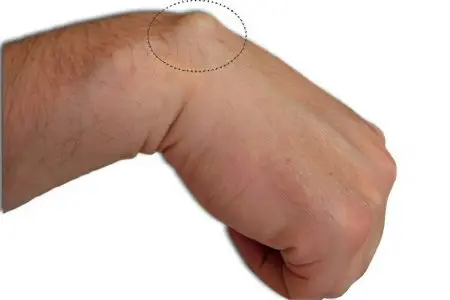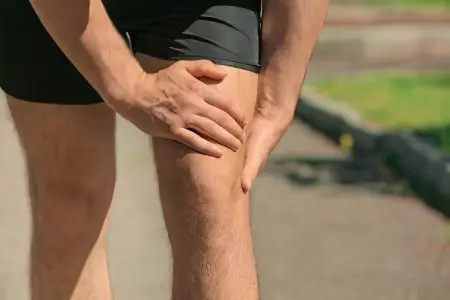Contents
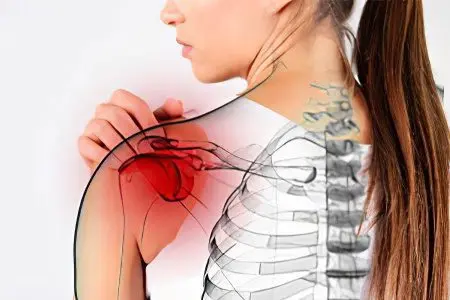
The following connections are located around the joint: capsule, synovial bag, tendons, muscles, ligaments. When a person has inflammation of the entire periarticular region, he is diagnosed with periarthritis. Thus, this term is understood as the simultaneous defeat of all periarticular tissues with the subsequent development of reactive inflammation in nearby joints. Periarthritis is classified as a rheumatic disease. The word itself is of Greek origin and consists of two roots: peri (around) and arthron (joint).
Periarthritis can affect all tissues and interosseous connections that are present in the musculoskeletal system. Most often, periarthritis is diagnosed in women over the age of 40-45, although men are also susceptible to this disease. Periarthritis accounts for up to 26,1% of all extra-articular inflammations of the soft tissues of the musculoskeletal system.
The most common form of this degenerative process is humeroscapular periarthritis. It accounts for 80% of the total number of rheumatic diseases of the shoulder. This is due to the fact that the tendons at the point of attachment of the shoulder joint are constantly in functional tension. The tendons of the muscles attached to the elbow joint, wrist and hands are less commonly affected. The rarest type of periarthritis is inflammation of the tendons and muscles in the joints of the lower extremities, since there the load falls on the joints, and not on their muscular frame.
Periarthritis is a disease that can seriously impair the patient’s quality of life, making him half disabled. After all, bones, joints, muscles and synovial bags are located throughout the body. Therefore, it is necessary to navigate the causes and symptoms of the disease in order not to delay treatment and consult a doctor in a timely manner.
Symptoms of periarthritis

Common symptoms of periarthritis:
Muscle pain that occurs only when performing certain movements.
A slight swelling of the inflamed area, which does not have severe pain.
Muscle tension that is present on an ongoing basis.
The presence of painful palpable points.
During the acute stage of inflammation, there may be a slight increase in local body temperature, swelling and redness of the damaged area.
Limitation of mobility in the joint is not excluded, but not complete, but partial.
During the radiographic examination, it is possible to detect calcifications and periostitis.
If, with periarthritis, only tendons are involved in the pathological process, then this will be manifested by the following symptoms:
tissue swelling;
Accumulation of infiltrate;
Spike of collagen fibers;
Formation of sclerotic areas and calcifications.
When the periarticular bag is affected, the following symptom complex will be observed:
Swelling of the skin over the site of inflammation;
skin hyperemia;
Accumulation of serous exudate;
Deformation of the walls of the synovial bag.
Symptoms of periarthritis will also vary depending on where the inflammation is located:
humeroscapular – This type of inflammation is diagnosed more often than others. With it, the tendon muscle is damaged in the scapular periosteal fossa. The head of the biceps is less commonly affected.
Symptoms of humeroscapular periarthritis:
Pain in the shoulder area, which can occur both during exercise (with a simple form of inflammation) and at rest (with an acute form of inflammation);
Severe pain occurs when you try to make rotational movements with your hand or when you try to overcome resistance;
The inability to raise your hand high, put it behind your back or make other complex movements;
“Frozen Shoulder Syndrome”, which is characterized by loss of sensation in the areas of the shoulder, shoulder blade, arm;
The acute form of the disease is characterized by subfebrile body temperature, the occurrence of insomnia, deterioration in performance, the presence of swelling and sharp pains;
In the chronic form of the disease, fusion of the walls of the bag is often observed with the further development of capsulitis and calcification of the affected tissues, as a result, the mobility of the upper limb will be seriously limited.
Algodystrophic syndrome “shoulder-hand”, as a kind of humeroscapular periarthritis.
Its symptoms are:
The appearance of severe burning pain in the area of the affected elements;
Trophic and vasomotor changes in the hand: blue skin, development of osteoporosis, muscle atrophy;
As the disease progresses, it leads to the formation of contractures of the fingers.
Wrist periarthritis. In this case, the tendon of the brachioradialis muscle most often suffers at the point of its attachment to the styloid process of the radius.
Symptoms of the disease:

Pain localized above the wrist joint;
They tend to increase with rotation of the joint surrounded by inflamed muscles;
Most often, there is a mild swelling of the affected area;
The disease has a persistent and prolonged course.
Elbow. In this type of periarthritis, tendons become inflamed where the hands, fingers, and forearms meet. Most often, the area of uXNUMXbuXNUMXbthe external epicondyle of the humerus suffers, therefore, the ulnar periarthritis is also called the “tennis elbow”.
Symptoms of the disease:
Pain in the epicondyle when trying to straighten the forearm;
It is not excluded an increase in lymph nodes, their soreness;
The pain radiates both to the upper part of the arm and down;
Passive movements become partially limited due to pain;
Most often, after a few months, self-recovery occurs, although subsequent relapses of the disease are not excluded.
Knee.
Symptoms:

Inflammation is localized in the inner part of the knee, below the knee bend, it is in this place that pain occurs;
The pain intensifies while walking, bending the knee, or with a long static position;
There may be swelling and redness of the skin in the area of inflammation.
Hip. In this case, the inflammation is localized in the area of the hip joint.
Symptoms:
Paroxysmal pain in the pelvic region, which radiate to the thigh;
The attack of pain proceeds as a painful crisis;
On palpation, the maximum pain is observed in the region of the greater trochanter, and when pressure is applied to its posterior superior angle, the pain becomes unbearable;
When the pains gain their maximum strength, the person becomes practically immobilized.
Ankle and foot. There are dystrophic changes in the foot, heel spurs are formed. Most often, athletes and overweight people suffer from this type of periarthritis. A common symptom of inflammation is the occurrence of pain when pressing on the heel. Pain is a consequence of the development of subcalcaneal bursitis.
Constant companions of periarthritis are conditions such as bursitis (inflammation of the synovial bag), capsulitis (inflammation of the joint capsule), tendonitis (inflammation of the tendon), fasciitis (local inflammation of the muscle). Also, the periosteum often reacts to periarthritis, which is in contact with the affected tendons, which leads to the development of periostitis.
Causes of periarthritis

Periarthritis may be due to dystrophic processes. True inflammatory periarthritis is also distinguished, which is extremely rare and is a consequence of chronic arthritis.
The reasons leading to the development of dystrophic periarthritis:
Repeated microtrauma of the tendons. They may be due to the peculiarities of a person’s professional activity, or be the result of increased physical exertion during sports. Prone to the formation of periarthritis are people of such professions as a painter, blacksmith, tennis player, etc.
Metabolic disorders are another reason that can lead to the development of inflammation of the periarticular tissues. It is worth noting that most often periarthritis is diagnosed in people with obesity.
Disturbances in the work of the endocrine system contribute to the development of periarthritis. This is especially true for women who are on the verge of menopause, or have already entered it.
Vascular disorders negatively affect the nutrition of periarticular tissues and can cause the development of their inflammation. Often, humeroscapular periarthritis is observed in people who suffer from coronary disease. In this case, inflammation of the tendons develops against the background of subsiding angina attack. In 15% of patients who have had a myocardial infarction, periarthritis also develops.
Do not overlook neuroreflex failures in the body.
The load and frequent injuries of the periarticular tendons lead to the formation of foci of necrosis in them, which subsequently sclerosis and calcification. Very often, reactive inflammation develops in these areas, which spreads to adjacent articular bags.
Additional risk factors that can influence the development of periarthritis are:
Diabetes;
Age over 40;
Transferred infections that had a severe course (periarthritis acts as a complication);
Prolonged exposure to cold and damp conditions;
Congenital diseases of the musculoskeletal system.
Diagnosis of periarthritis
Diagnosis begins with examination and listening to the patient’s complaints. The doctor should be extremely careful, since periarthritis is very easy to confuse with arthritis and arthrosis.
Evaluation criteria that distinguish periarthritis from true joint diseases:
Diagnostic criterion | Periarthritis | Arthritis | Arthrosis |
The nature of pain | Occurs only when the patient makes certain movements | Pain occurs spontaneously, becomes more intense with any movement | Pain occurs when any movement occurs, spontaneous pain is absent |
The presence of swelling | Swelling is small, palpation may respond with mild pain | Diffuse diffuse and painful swelling that has no clear boundaries | No |
Joint changes | Joints are not deformed | There is deformity of the joints, but it is not very pronounced. Deformation occurs due to changes in soft tissues. | Bone growths provoke severe deformity of the joints |
Pain during palpation | Painful points are palpated | The pain is diffuse, quite intense | On palpation, there are mild pains, or they are completely absent. |
Local temperature increase | Possibly, but not much | The temperature is greatly increased | No |
Limb movements (passive) | not violated | limited | Not violated or slightly limited |
Movement in the joint (active) | Partially limited | severely limited | Saved in full |
Change in the blood picture | Within the normal range. In the acute phase, an increase in ESR and CRP is possible. | A jump in ROHE, fibrinogen, seromucoid, detection of C-reactive protein in the blood | Within normal limits |
X-ray | It is possible to detect calcifications and periostitis, but only in the advanced stage of the disease | The joint space is narrowed, osteoporosis of the epiphyses is traced, the articular surfaces are covered with erosions. | The joint space is narrowed, osteophytes are present, subchondral osteosclerosis |
Patients can complain about pain in the muscles surrounding the joint to such specialists as a general practitioner, surgeon, rheumatologist, orthopedist, neurologist.
After collecting anamnesis and examination, the doctor will refer the patient to undergo a number of additional examinations:
Radiography.
Ultrasound.
MRI.
As a rule, x-rays show changes in the joints (deposits of calcium crystals, the development of osteoporosis of the head of the bone) with prolonged and progressive periarthritis.
Invasive diagnostic techniques such as arthrography and arthroscopy can only be used when the patient is undergoing surgery.
Treatment of periarthritis
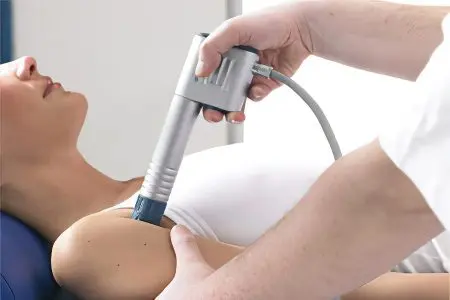
Regardless of where exactly the inflammatory process is localized, the treatment of periarthritis should be comprehensive.
It is carried out in the following areas:
Elimination of the symptoms of the disease.
Restoration of the volume of lost muscle movements.
Carrying out a set of measures aimed at preventing the recurrence of the disease and the development of complications.
Elimination of destructive changes in the joints.
Treatment of comorbidities, if any.
It is worth considering that periarthritis tends to become chronic, so treatment should be persistent. Experts recommend eliminating the load from the affected tendon as much as possible, which is especially important in the acute stage of inflammation. Bandages are used to immobilize the limb. If the case is severe, then plaster may be applied.
Pain relievers

To eliminate pain, painkillers and anti-inflammatory drugs are used: Aspirin, Analgin, Indomethacin, Brufen, Reopirin, Butadion. The recommended therapeutic dose should not be exceeded.
To reduce pain, you can use ointments for topical application to the skin. For this purpose, anabolic, warming and painkillers are used. Among these drugs: ointment Diclofenac, Ibuprofen, Indomethacin, camphor, methyl salicylate.
In the acute phase of periarthritis, in the presence of severe pain, infiltration of the affected area with hydrocortisone and novocaine is necessary. Frequency of injections: every 5-10 days. They continue to be administered until the pain is reduced.
Acute pain requires short-term course treatment with glucocorticosteroids. For this, the patient will take oral Prednisolone (10-15 mg per day) for 10-20 days. Gradually, the dose should be reduced, up to the complete rejection of the drug. Additionally, the doctor may prescribe muscle relaxants, angioprotectors, chondroprotectors.
Physiotherapeutic treatment
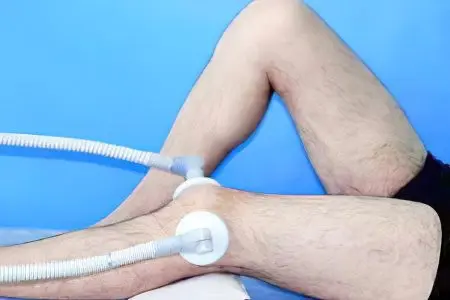
Physiotherapy is also indicated from the first days of the patient’s request for help.
For periarthritis, the following types of treatment are applicable:
Phonophoresis with hydrocortisone.
Microwave treatment.
Ultrasound treatment.
Cryotherapy, laser therapy.
Shock wave therapy, acupuncture has proven effectiveness.
Electrophoresis with painkillers and drugs aimed at improving blood circulation.
Hydrogen sulfide and radon baths give an excellent effect in the treatment of chronic periarthritis.
Therapeutic exercise

A separate direction in the treatment of periarthritis is therapeutic exercises. It must be started very carefully, with passive movements.
The main goals pursued by physiotherapy exercises:
Reducing the intensity of pain attacks;
Restoration of limb mobility;
Relaxation of the inflamed muscle;
Normalization of muscle tone and muscle strength.
Gymnastic complexes can be performed at home, as well as in a hospital. The emphasis is on exercises that do not cause pain. The joints around which periarthritis has developed should be worked out, but the diseased limb should not be overloaded.
Surgery and prognosis

The operation is performed only when all methods of treating inflammation are ineffective, and the disease continues to progress.
Other indications for surgery:
Inability to relieve pain with corticosteroid injections;
Recurrent pain that does not subside after 6-8 months of treatment;
Patients over 40 years old, whose work is associated with a load on the joint, in the area of uXNUMXbuXNUMXbwhich the inflammatory process occurs;
Tendon injury leading to joint deformity;
Damage to peripheral nerve fibers.
The surgeon performs a dissection of the adhesions, which allows you to restore the mobility of the diseased tendon. At the same time, spurs, salt deposits and other pathological growths are removed.
As for the prognosis for recovery, in most cases it is favorable. If the treatment is carried out in a complex and in the system, then the necrotic foci and calcifications gradually resolve. In parallel, the pain disappears, the mobility of the limb normalizes. However, for a successful recovery, it is necessary to consult a doctor in a timely manner. The long course of the disease can lead to the formation of fibrous adhesions of the tissues surrounding the joint. As a result, it will not be possible to fully restore his mobility, which means that a person will receive a permanent disability, lose the skills of household and professional activities.
Prevention of periarthritis
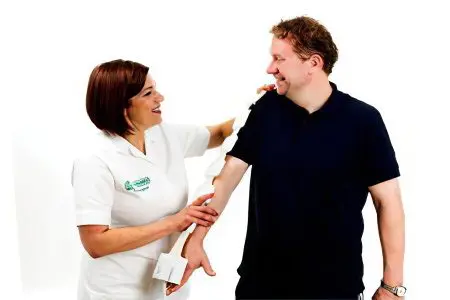
To minimize the risks of developing periarthritis, you must adhere to the following recommendations:
Engage in physical education, but training should be moderate.
Do not abuse the load on a particular joint. If this cannot be avoided by the nature of professional activity, then the overloaded joint should be provided with sufficient rest. An excellent prevention of the disease is massage.
Infectious diseases should be treated qualitatively and in a timely manner.
It is necessary to avoid situations that injure the joint. Moreover, the danger is not only macro, but also microtrauma.
No less important is the prevention of diseases of the musculoskeletal system in general.
To simplify the therapy of periarthritis and make it as fast as possible, if pain occurs in the joint area, do not self-medicate, but immediately go to a specialist.










